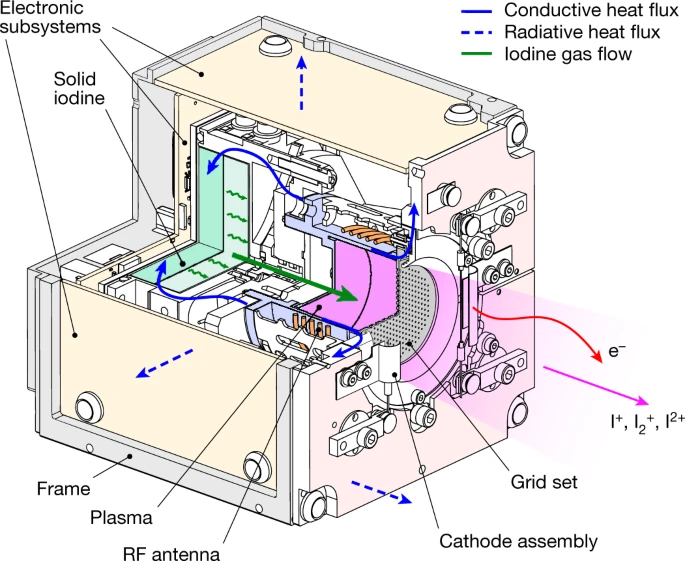Phys.org November 18, 2021
Xenon is used almost exclusively as an ionizable propellant for space propulsion. However, xenon is rare, it must be stored under high pressure and production cost is high. Researchers in France used iodine propellant in a system and presented in-orbit results of the technology. They stored iodine as a solid and sublimated at low temperatures. Plasma was produced with a radio-frequency inductive antenna with enhanced ionization efficiency. Both atomic and molecular iodine ions were accelerated by high-voltage grids to generate thrust, and a highly collimated beam was produced with substantial iodine dissociation. The propulsion system was successfully operated in space onboard a small satellite with maneuvers confirmed using satellite tracking data. They anticipate that these results will accelerate the adoption of alternative propellants within the space industry and demonstrate the potential of iodine for a wide range of space missions, enabling substantial system miniaturization and simplification, which provides small satellites and satellite constellations with new capabilities for deployment, collision avoidance, end-of-life disposal, and space exploration…read more. Open Access TECHNICAL ARTICLE

Schematic of the NPT30-I2 iodine electric propulsion system. Credit: Nature volume 599, pages411–415 (2021)